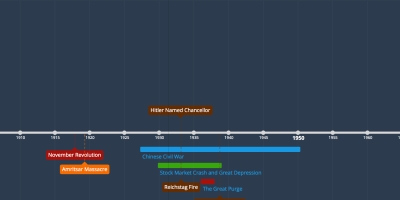0h 48min, apr 13, 1919 y - Amritsar Massacre
Description:
After WWI, Indians, furious over broken promises from Britain for self-rule in exchange for participation in war, became engaged in nationalist movements. In response, the British passed oppressive laws restricting Indian rights. The new laws included a ban on organized protests and opposition gatherings, with some areas declaring martial law separately. In April 1919, thousands of pilgrims and protestors gathered in a square at Amritsar to listen to a speech. The local British commander, who failed to inform the public of the martial law declaration, decided the illegal gathering should be punished with force. He led soldiers to lock down the square and fire on the civilians, killing hundreds in a bloodbath. The massacre sent India into furor, turning loyal British subjects in India into supporters for independence and autonomy overnight. Out of the nationalist sentiment rose new leaders for the independence movement, most prominently Mohandas Gandhi. Gandhi and other Indian leaders, bolstered by the massive wave of support, embarked on ambitious resistance movements, following Gandhi’s principles of civil disobedience and nonviolence. The resistance movement galvanized by the massacre ended up undermining British authority, forcing the British to grant limited autonomy, and eventually, realize their rule over India had to come to an end. The Amritsar Massacre, tragedy though it was, was a sacrifice not made in vain. The deaths of the civilians at the square became a catalyst for Indian independence, marking the beginning of the end for the British Empire and the formation of two independent nations, India and Pakistan.
Added to timeline:

Interwar Period Annotated Timeline
Date:
Geo:
